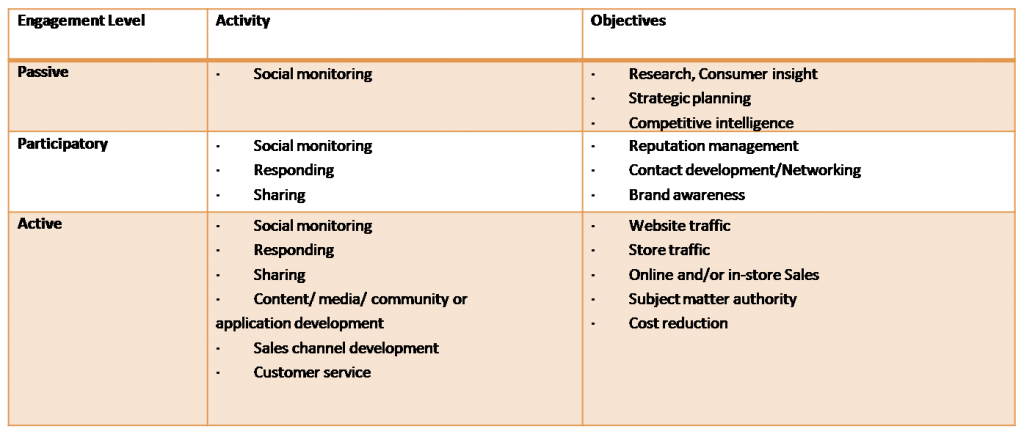By Doug Stephens
Alice in Wonderland speaking to the Cheshire Cat….
“Would you tell me, please, which way I ought to go from here?” “That depends a good deal on where you want to get to” said the Cat. “I don’t much care where—“ said Alice. “Then it doesn’t matter which way you go” said the Cat. “–so long as I get SOMEWHERE,” Alice added as an explanation. “Oh, you’re sure to do that” said the Cat, “if you only walk long enough.
***************************************************************************************************************************
Like Alice, marketers often find themselves needing to “get somewhere” but may not be precisely sure where that somewhere is. This has become particularly true of social marketing efforts. With the fervor around social media, marketers are feeling pressured to begin incorporating it into their program but aren’t quite sure how. In some cases they’re not even completely sure why social marketing matters so much – they just feel they ought to be doing it. So, like Alice, they often set out in a direction, only to find that after considerable time and effort, it got them nowhere.
In talking with marketers I’ve come across three common pitfalls that, from the beginning, can lead them astray.
Pitfall #1: Believing that ALL social marketing means creating social media
While social marketing may involve social media, there’s a fundamental misconception that all social marketing involves the development of content – blogs, videos, Facebook apps etc. This is not always true. Media or content development is only one aspect of social marketing. Depending on your company’s objectives, you may never want or need to create your own content. The key lies in defining what results you want from the program. What do you want to happen as a result of your social marketing?
I like to think of social marketing as a spectrum of engagement ranging from passive to active. The objectives you target will directly affect the activities you undertake and your engagement level.
Pitfall #2: Setting Program Objectives That Aren’t Measurable
I was speaking recently with the head of marketing for a major regional shopping centre. We were talking about her desire to begin to incorporate social marketing into her plans. When I asked what her objective was, she said “to generate foot traffic for the mall.” This sounded like a reasonable objective but the problem is that the mall has no empirical means of credibly measuring foot traffic.
The objectives you set should meet three key criteria; they should support the overarching strategy and positioning of your business. They should be credibly measurable. And lastly, they should be meaningful to the people in your company that control the financial and/or human resources you’ll need to continue or expand your social marketing effort. After all, there’s no glory in meeting an objective, if it doesn’t at least win you the resources you need to continue your program.
This doesn’t preclude you from establishing any objective you want; it only puts the onus on you to make sure it matters and measure it.
Pitfall #3: Confusing Social Activity with Return on Investment
One of the most uncomfortable points in a marketing meeting is when the CFO turns to the CMO and asks what the R.O.I to date is on the company’s social marketing program. The only thing less comfortable is when the CMO cites the R.O.I as having gotten their 1000th Facebook fan. This is usually met by a blank look from the CFO, who is quietly making a mental note not to invest another nickel in the social marketing program.
While it’s true that some enlightened companies have simply come to regard social marketing as a tool that is as essential as their phone system, they are definitely the minority. The rest of the world works for companies that regard social marketing as the new kid on the block that needs to earn every nickel it consumes.
Part of what gives social marketing a bad rap is that too many marketers simply measure and report the company’s social marketing activity – that is blog posts, YouTube videos, Tweets etc. They also tend to confuse return on investment with non-financial consumer responses like blog subscriptions, YouTube views, Re-tweets etc. The result can often be a nebulous set of metrics that neither support nor negate the merits of their program. What they fail to measure is the amount of sales, profit or cost-savings that the social marketing program is (or isn’t) generating – the real return on investment.
Part of the problem is that we’ve been told that financial R.O.I on social marketing can’t be measured – that it needs to be valued against softer metrics – which is simply not true. I won’t go into detail about it in this post but will instead point you to a great Slideshare presentation here from Olivier Blanchard from Brandworks who shares an excellent methodology on for measuring financial R.O.I on your social marketing spend.
We’re beyond the “shiny tool” phase with social marketing and the onus is back on marketers to show the return on their work in this area. Like most things, with social marketing you tend to finish how you started. So, be sure to start with the right objectives, the right means of measurement and a clear path to the (real) R.O.I. your program is delivering.


